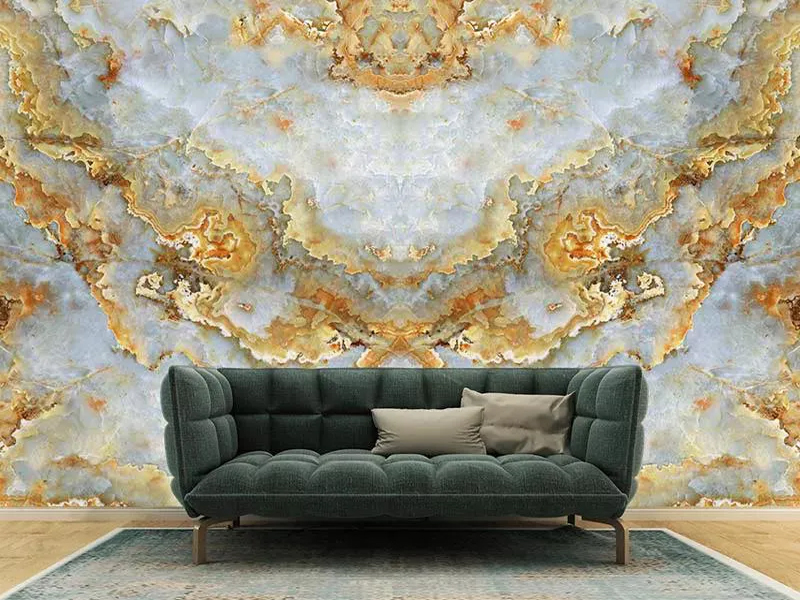
Stone slabs
Stone slab is large, flat pieces of natural stone that are commonly used in construction and landscaping. This versatile and durable materials is prized for its strength, longevity, and aesthetic appeal. Stone slabs come in a wide variety of types, including granite, marble, limestone, and slate, each with its own unique color, texture, and natural patterns. They are often used for countertops, flooring, wall cladding, and outdoor paving due to their ability to withstand heavy use and harsh weather conditions. Stone slabs can also be custom-cut to fit specific design requirements, making them a popular choice for both residential and commercial projects. Whether used for interior or exterior applications, stone slabs add a timeless and elegant touch to any space, making them a sought-after material in the construction and design industries. Let’s discuss more about the stone slab now and its features, varieties and applications.
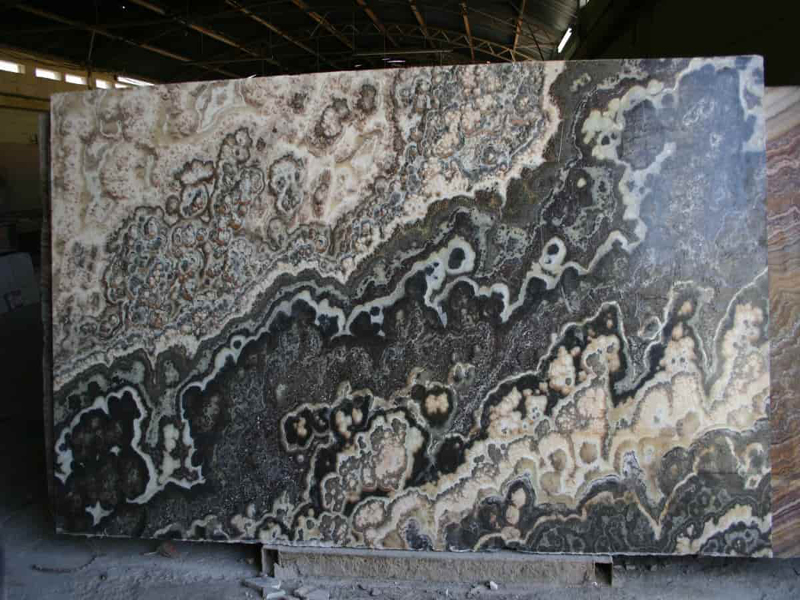
Natural and artificial stone slabs
There are two main branches of slabs; Natural and Artificial or Engineered slabs. As for any person who intends to use them in his/her construction project, is important to get information around these two main types, so we set out some discussion as the followings.
1. Artificial Stone Slabs
Artificial stone slabs, also known as engineered stone, are manufactured using a combination of natural materials such as quartz and resins. These slabs are designed to mimic the appearance of natural stone while offering enhanced durability and consistency in color and pattern. They are non-porous, resistant to staining, and do not require sealing, making them low maintenance and suitable for high-traffic areas. Artificial stone slabs are available in a wide range of colors and patterns, providing versatility in design options for countertops, vanities, and other surfaces. They offer a modern and uniform appearance while retaining the aesthetic appeal of natural stone.
Advantages of Artificial Stone Slabs:
- Consistency: Artificial stone slabs offer a more uniform appearance compared to natural stone, making it easier to match and install in large projects.
- Cost-Effectiveness: Artificial stone can be more affordable than natural stone, making it a budget-friendly option for those seeking the look of stone without the high price tag.
- Non-Porous: Many artificial stone materials are non-porous, making them resistant to stains and easier to maintain than natural stone.
- Environmental Impact: Some artificial stone slabs are manufactured using recycled materials, making them a more environmentally friendly choice.
Disadvantages of Artificial Stone Slabs:
- Heat Sensitivity: Some artificial stone materials may not be as heat resistant as natural stone, requiring additional care when placing hot items on the surface.
- Environmental Impact: While some artificial stone is eco-friendly, others may have a higher environmental impact due to their manufacturing process and use of certain chemicals.
2. Natural Stone Slabs
Natural stone slabs are quarried directly from the earth and are available in a variety of materials such as granite, marble, limestone, and slate. Each type of natural stone has its own unique characteristics in terms of color, veining, and texture. These slabs are highly durable and can withstand high temperatures, making them suitable for a wide range of applications including countertops, flooring, and wall cladding. Natural stone slabs require regular maintenance such as sealing to protect against staining and damage. They offer a timeless and natural aesthetic that adds value and sophistication to any space.
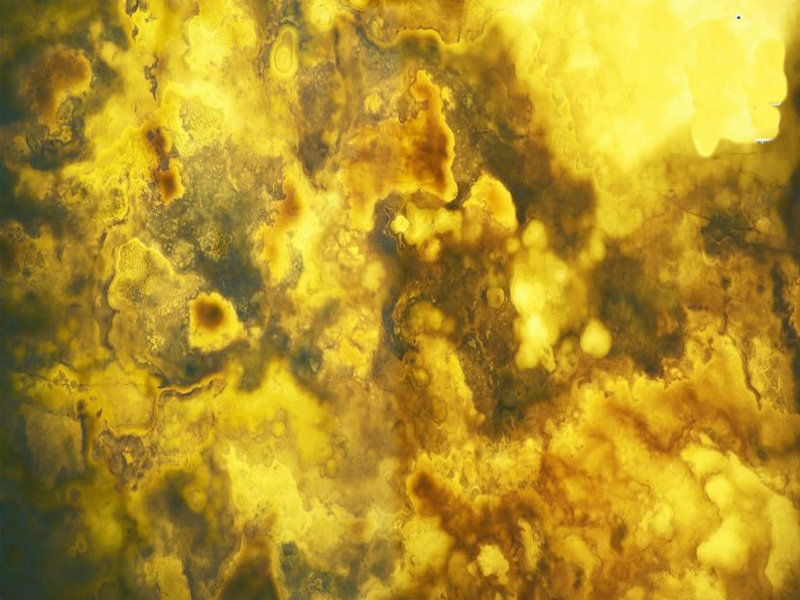
Advantages of Natural Stone Slabs:
- Unique Appearance: Natural stone slabs, such as granite and marble, offer a one-of-a-kind look with variations in color, veining, and patterns, adding a distinctive touch to any space.
- Durability: Natural stone is known for its durability and can withstand heavy use, making it suitable for high-traffic areas.
- Heat Resistance: Natural stone is heat resistant, which makes it ideal for use in kitchens where hot pots and pans are frequently used.
- Longevity: When properly maintained, natural stone can last a lifetime, making it a long-term investment for your property.
Disadvantages of Natural Stone Slabs:
- Porosity: Natural stone is porous and can be susceptible to staining if not properly sealed and maintained.
- Limited Availability: Some types of natural stone may be less readily available and can vary in price based on rarity and sourcing.
- Maintenance: Natural stone requires regular sealing and maintenance to preserve its appearance and durability.
Types of stone slabs
There are different types of stone slabs. What are discussed in the next parts, are all about natural stone slabs each one has its unique characteristics.
Granite Slabs
Granite slabs are popular natural stone surfaces known for their durability, unique beauty, and versatility. Composed primarily of quartz, feldspar, and mica, granite is formed through intense heat and pressure deep within the earth, resulting in a dense and hard material. Its distinct veining, speckled patterns, and wide range of colors make each slab unique. Granite is highly resistant to scratches, heat, and stains, making it an ideal choice for kitchen countertops, bathroom vanities, and various indoor and outdoor applications. With proper sealing and maintenance, granite slabs can maintain their luster and functionality for many years. While granite is prized for its luxurious appearance and robustness, it’s important to note that individual slabs can vary in characteristics, so selecting the right slab is crucial for achieving the desired aesthetic and performance.
Marble Slabs
Marble slabs are exquisite natural stone surfaces renowned for their timeless elegance and luxurious appeal. Formed from limestone that undergoes metamorphism under high pressure and heat, marble showcases a distinctive veining and a range of captivating colors, from classic whites to richly veined varieties. Its smooth, polished surface and unique patterns make it a popular choice for countertops, flooring, and decorative accents in both residential and commercial settings. While marble is softer than granite, it offers a sophisticated and refined aesthetic that has been cherished for centuries. It’s essential to note that marble is more susceptible to scratching and staining than granite, requiring regular sealing and diligent maintenance to preserve its beauty. Despite its maintenance needs, marble’s unparalleled beauty and timeless allure continue to make it a sought-after material for creating elegant and sophisticated interior spaces.
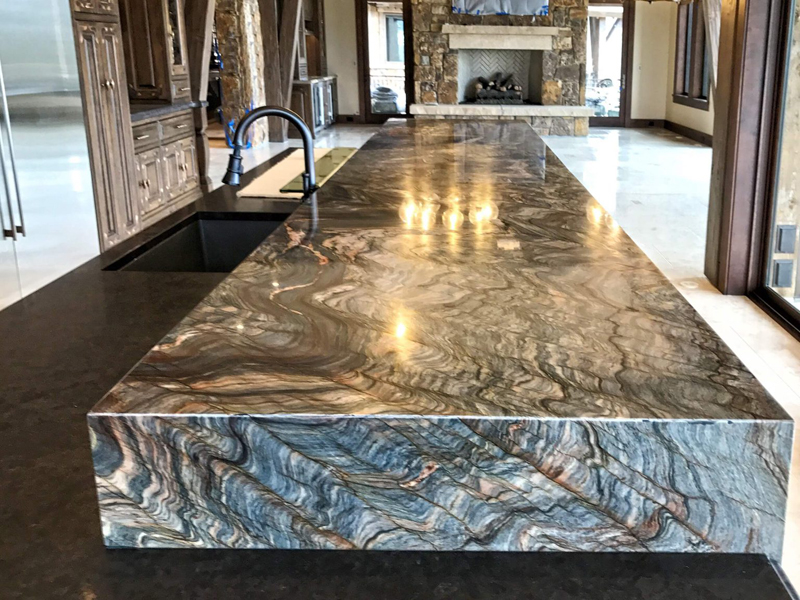
Quartz Slabs
Quartz slabs are engineered stone surfaces composed primarily of natural quartz crystals, resins, and pigments. This combination results in a durable and non-porous material that offers a wide range of colors and patterns, often mimicking the look of natural stone. Quartz slabs are highly resistant to scratches, stains, and heat, making them an ideal choice for kitchen countertops, bathroom vanities, and other high-traffic areas. Unlike natural stone, quartz does not require sealing and is relatively low-maintenance, offering consistent color and pattern throughout the slab. Its uniformity and versatility make it a popular option for contemporary and modern interior designs. While quartz is not as heat-resistant as natural stone like granite, its durability and ease of maintenance make it a practical and attractive choice for various residential and commercial applications.
Limestone Slabs
Limestone slabs are natural stone surfaces formed from sedimentary rock composed mainly of calcium carbonate. With a soft, muted appearance and a range of earthy tones, limestone slabs offer a timeless and elegant aesthetic that complements both traditional and contemporary design styles. While less dense than granite or marble, limestone is still suitable for various interior applications such as flooring, wall cladding, and fireplace surrounds. It’s important to note that limestone is more porous than some other natural stones, making it susceptible to staining and etching from acidic substances. Therefore, proper sealing and regular maintenance are essential to preserve its appearance and integrity. Despite its maintenance requirements, limestone’s unique texture and warm, inviting look make it a popular choice for adding a touch of natural beauty to interior spaces.
Slate Slabs
Slate slabs are natural stone surfaces known for their distinctive texture, durability, and versatile applications. Formed from fine-grained metamorphic rock, slate exhibits a unique layered structure and a range of earthy colors, including shades of gray, green, and rust. Its natural cleft surface provides an appealing texture and rustic charm, making it a popular choice for indoor and outdoor flooring, roofing, wall cladding, and decorative accents. Slate’s inherent slip resistance and weather-resistant properties make it suitable for use in wet areas such as bathrooms, kitchens, and outdoor patios. While slate is durable and low-maintenance, it may require occasional sealing to enhance its longevity and protect against staining. The rich, organic appeal of slate slabs adds a touch of natural beauty to various design schemes, from traditional to contemporary, making it a favored material for creating visually striking and enduring surfaces in residential and commercial settings.
Choosing the Right Stone Slab for Your Project
Selecting the ideal stone slab for your project is a crucial decision that can significantly impact the overall aesthetics and functionality of the space. Factors to consider include the type of stone, such as granite, marble, quartz, or slate, as well as color, veining, durability, and maintenance requirements. Understanding the specific characteristics and suitability of each stone type for different applications, whether it’s kitchen countertops, bathroom vanities, or flooring, is essential. Additionally, assessing the design style and desired ambiance of the space will help guide the selection process. By carefully evaluating these factors and seeking guidance from professionals, you can ensure that the chosen stone slab not only complements the design vision but also meets the practical needs of the project.
read more: Flooring Stone
Maintaining and Caring for Your Stone Slabs
Proper maintenance and care are essential for preserving the beauty and longevity of stone slabs. Depending on the type of stone—whether natural or artificial—specific care routines may be required. For natural stone like granite and marble, regular sealing is crucial to protect against staining and etching. It’s also important to avoid harsh cleaning agents and acidic substances that can damage the surface. In contrast, artificial stone slabs like quartz may not require sealing but benefit from gentle cleaning with mild soap and water. Regardless of the type, routine cleaning, prompt removal of spills, and using coasters or trivets to prevent heat damage are universal practices for maintaining stone slabs. By following recommended care instructions and addressing any issues promptly, you can ensure that your stone slabs retain their beauty and functionality for years to come.
Innovative Applications of Stone Slabs in Architecture and Design
Stone slabs offer endless possibilities for innovative applications in architecture and design. Beyond traditional uses in countertops and flooring, architects and designers are exploring new ways to incorporate stone slabs into interior and exterior spaces. This includes using large-format slabs for seamless wall cladding, creating sculptural elements, and implementing custom-cut stone pieces for unique design features. In contemporary architecture, stone slabs are being utilized to craft statement-making facades, striking staircases, and artistic installations that showcase the natural beauty and versatility of the material. Moreover, advancements in technology have expanded the potential for intricate detailing and precision in stone fabrication, allowing for intricate patterns, textures, and 3D forms. By pushing the boundaries of creativity and craftsmanship, stone slabs continue to inspire innovative and extraordinary design solutions across diverse architectural and interior design projects.
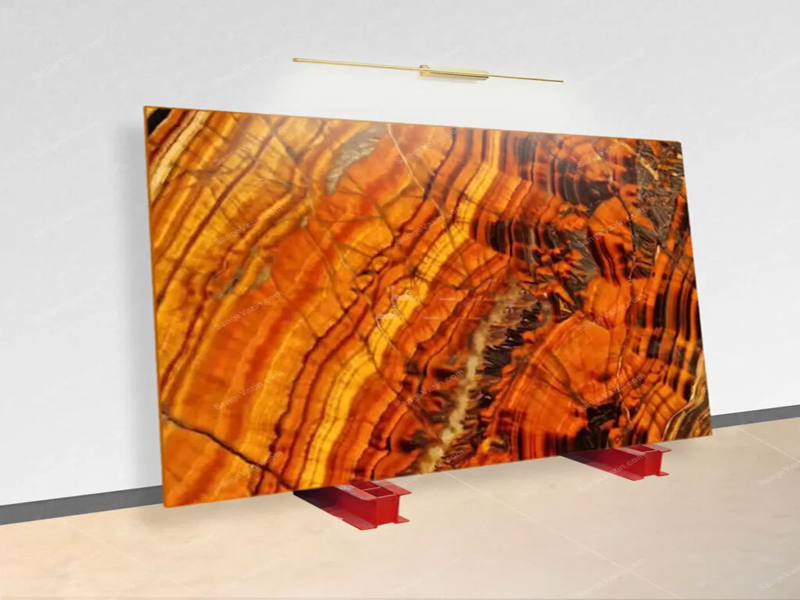
Conclusion
In conclusion, stone slabs offer a diverse array of options for enhancing interior and exterior spaces, each with its own unique characteristics and advantages. Whether it’s the timeless elegance of natural stone like marble and granite, the versatility of engineered quartz, or the rustic charm of slate, there’s a stone slab to suit every design vision and practical need. By understanding the properties and maintenance requirements of different types of stone, individuals can make informed decisions when selecting slabs for their projects. Additionally, exploring innovative applications of stone slabs in architecture and design opens up exciting possibilities for creating visually stunning and functional spaces. With proper care and maintenance, stone slabs can stand the test of time, adding enduring beauty and value to residential and commercial environments. As the demand for natural and artificial stone slabs continues to grow, the potential for creative and sustainable use of these materials in design and construction remains boundless.

